How To: Create a Bronze Sculpture with Lost-Wax Casting
Posted by Cass Art on 3rd Jun 2018
Hand Gestures is a visually stunning film, documenting an Italian artist and his craftsmen as they create a bronze sculpture in an historic Milanese foundry. The process of lost wax casting is a technique that dates back to the 4th-century BC, and artists today are still using it to shape, knead, model, mix, repair, sand and polish their creations.
Directed by Francesco Clerici and applauded at the BFI London film festival this year, we've taken some stills from the film to show the age old process in action.
HOW TO CREATE A BRONZE SCULPTURE WITH LOST-WAX CASTING
Model-making. The artist creates an original model.
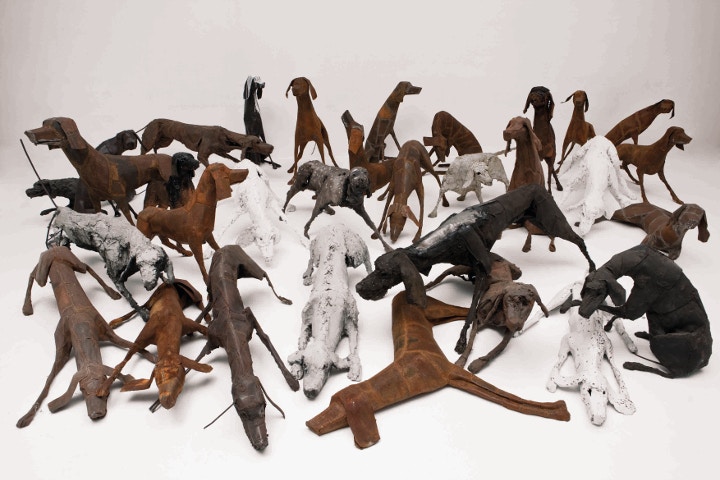
Mould-making. A mould is made of the original model or sculpture. The rigid outer moulds contain the softer inner mould, which is the exact negative of the original model.
Wax. Once the mould is finished, molten wax is poured into it and swished around until an even coating, usually about 1⁄8 inch (3 mm) thick, covers the inner surface of the mould.
Removal of wax. This hollow wax copy of the original model is removed from the mould. These first steps can today be made in many different ways, but from here (where the film starts) the process has always been identical.
Chasing. Each hollow wax copy is then "chased": a heated metal tool is used to rub out the marks that show the parting line or flashing where the pieces of the mould came together. The wax is dressed to hide any imperfections. The wax now looks like the finished piece.
Spruing. The wax copy is sprued with a tree-like structure of wax that will eventually provide paths for the molten casting material to flow and for air to escape.
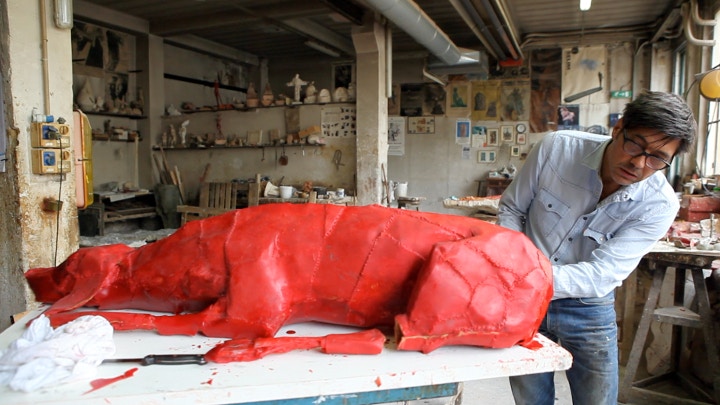
Slurry. A sprued wax copy is dipped into a slurry of silica, then into a sand-like stucco, or dry crystalline silica of a controlled grain size.
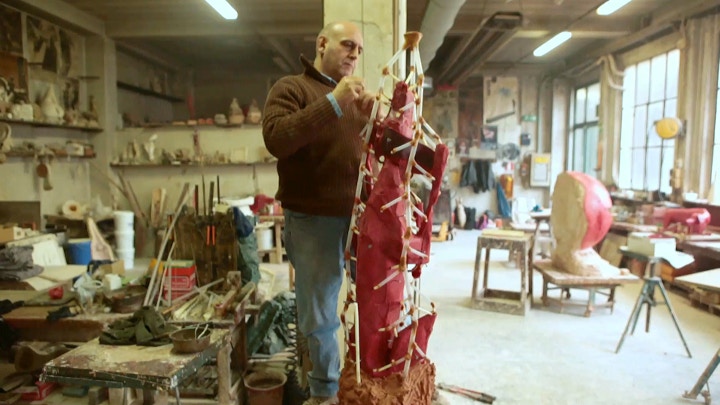
Burnout. The coated piece is placed cup-down in a kiln, where heat hardens the silica coatings into a shell, and the wax melts and runs out. The melted wax can be recovered and reused, although it is often simply burned up. Now all that remains of the original artwork is the negative space formerly occupied by the wax, inside the hardened shell.
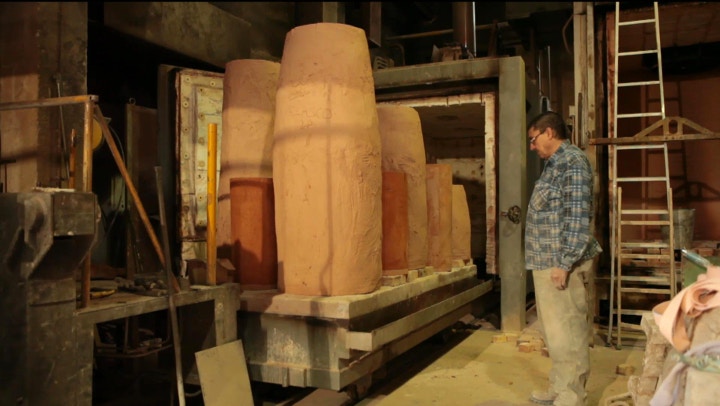
Pouring. The shell is reheated in the kiln to harden the patches and remove all traces of moisture, then placed cup-upwards into a tub filled with sand. Bronze is melted in a crucible in a furnace, then poured carefully into the shell.
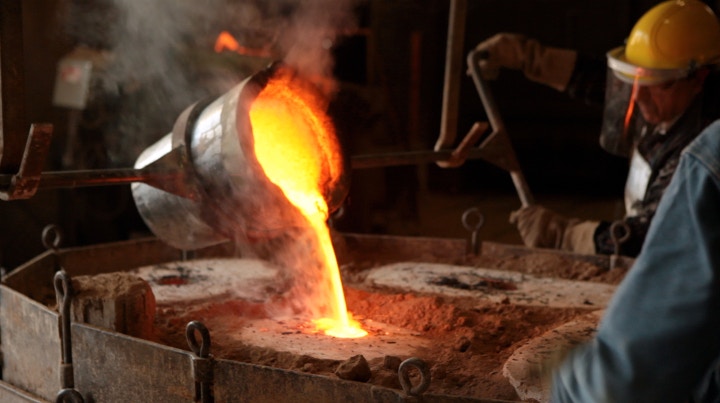
Release. The shell is hammered or sand-blasted away, releasing the rough casting. The sprues, which are also faithfully recreated in metal, are cut off, the material to be reused in another casting.
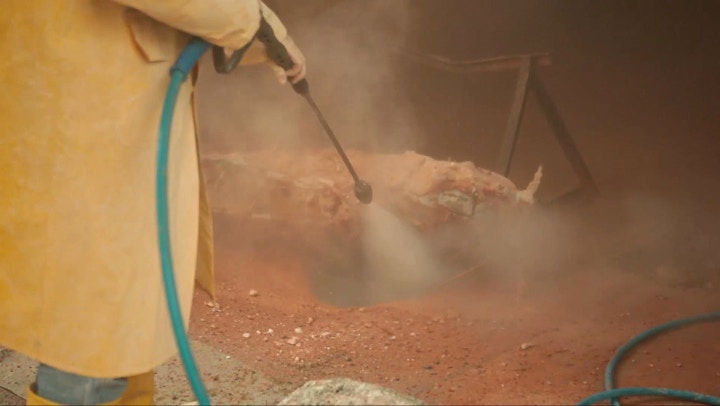
Metal-chasing. Just as the wax copies were chased, the casting is worked until the tell tale signs of the casting process are removed, so that the casting now looks like the original model. Pits left by air bubbles in the casting and the stubs of the spruing are filed down and polished.
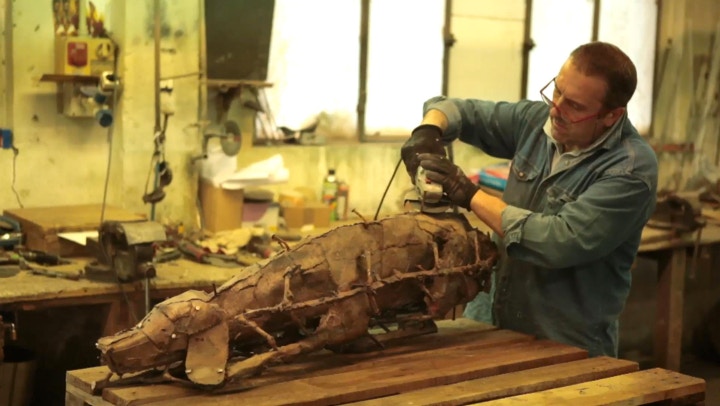
Glazing. The Artist choose the patina preferred for the sculpture.
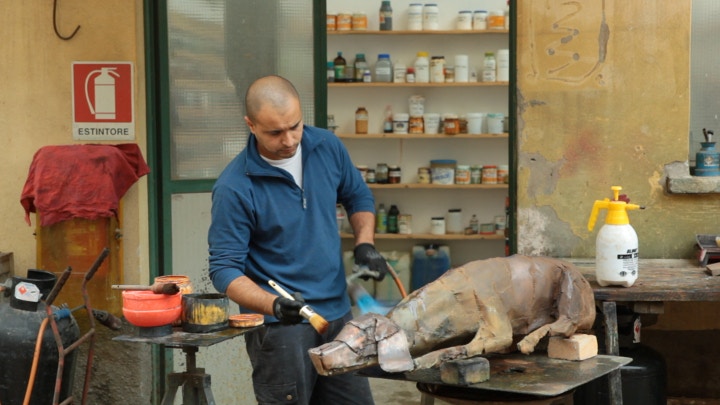
Feeling inspired?
Hand Gestures was produced by Velasco Vitali, Francesco Clerici, Fonderia Artistica Battaglia. Vitali himself says of the process:
I do not think that things should be left to luck, but in art there is an unpredictable domain of The Case. What has been designed is not at all what will be presented as finished form. The work is conditioned by several variants and the main ones are the process of work and the time required to execute the art-work. The final surprise is given by the combination of these steps, invisible in the final results, but perceptible from the emotional point of view.
The lost-wax bronze casting is one of those cases that, even in total control in the making of, always offers surprises that I could define "alchemical". I like to associate this technique to the traditional engraving, etching for instance, where certain elements like fire, wax, metals, acids and the removal of the material combine in a surprising way to the final result. It is no coincidence that this technique often has spoken of alchemy, certainly for its unpredictable control. Always, when the plate is immersed in acid or cause of the strength of the sign under the pressure of the press, something gets lost . Even this is a technique where the various steps executive, except the design, may be totally entrusted to experts. Indeed, also in this case, it is precisely the skills that determine the differences and considerable impact on the final result.
This is what happens in a similar way in the lost wax casting, where the control of the artifact is absolute, but the margin of error, however slight, and "style" (each artisan has his little secrets and guards) will be the one that when added to other in the later stages it will determine the final character of the work. The artist's role is to be able to recognize these skills and make them their own.



